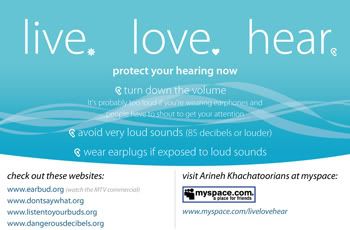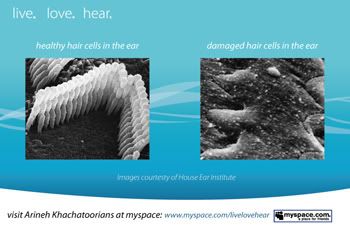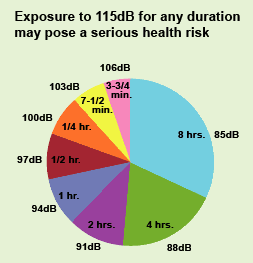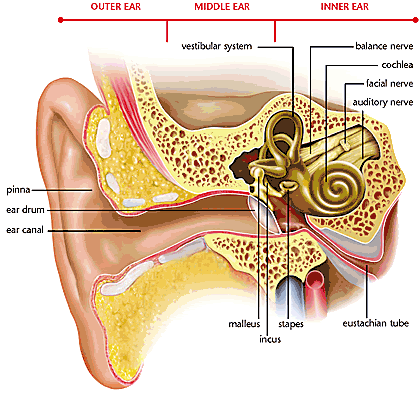Have you ever experienced ringing or buzzing in your ears? Sometimes after being exposed to very loud situations, for example concerts, you may hear ringing in your ears immediately afterwards. For most people, the ringing is only temporary and is a result of the noise exposure. However, others are bothered by ringing in their ears often or most of the time. It is estimated that 12 million Americans suffer from tinnitus
Definition of tinnitus: Tinnitus is the medical term for the perception of sound in one or both ears or in the head when no external sound is present. It is often referred to as "ringing in the ears," although some people hear hissing, roaring, whistling, chirping, or clicking. Tinnitus can be intermittent or constant-with single or multiple tones-and its perceived volume can range from subtle to shattering (American Tinnitus Association).
What causes it? There are a few causes of tinnitus; these include hearing loss, exposure to loud noise, certain types of medicines, allergies, tumors and problems in the heart and blood vessels, jaws and neck. In most cases, tinnitus is a result of damage to the microscopic endings of the hearing nerve in the inner ear. Typically, the younger the person, the more likely it is that their tinnitus is a result of loud noise exposure.
What should you do if you are experiencing the symptoms of tinnitus? Go see a doctor and he or she will try to determine the cause. Your doctor may refer you to an ENT to examine your ears and an audiologist, who can test your hearing.
Are there any treatments? Yes. Although there is no cure for tinnitus, there are some treatments that can provide relief. Treatments include maskers, medicine, relaxing and more. Click here for a complete list of treatments: Treatments
Definition of tinnitus: Tinnitus is the medical term for the perception of sound in one or both ears or in the head when no external sound is present. It is often referred to as "ringing in the ears," although some people hear hissing, roaring, whistling, chirping, or clicking. Tinnitus can be intermittent or constant-with single or multiple tones-and its perceived volume can range from subtle to shattering (American Tinnitus Association).
What causes it? There are a few causes of tinnitus; these include hearing loss, exposure to loud noise, certain types of medicines, allergies, tumors and problems in the heart and blood vessels, jaws and neck. In most cases, tinnitus is a result of damage to the microscopic endings of the hearing nerve in the inner ear. Typically, the younger the person, the more likely it is that their tinnitus is a result of loud noise exposure.
What should you do if you are experiencing the symptoms of tinnitus? Go see a doctor and he or she will try to determine the cause. Your doctor may refer you to an ENT to examine your ears and an audiologist, who can test your hearing.
Are there any treatments? Yes. Although there is no cure for tinnitus, there are some treatments that can provide relief. Treatments include maskers, medicine, relaxing and more. Click here for a complete list of treatments: Treatments
I have talked to several people that suffer from tinnitus and they describe it as being sometimes difficult to deal with and distracting. It is important to find a treatment method that works and practicing it. Some people find that listening to the TV or music helps to mask the ringing or buzzing. With proper treatment, it is possible for most people to live a normal life.
LISTEN: audio simulation which mimics what tinnitus (ringing in the ears) (click on link to play)
Tinnitus simulation by Dr. Billy Martin of the Oregon Hearing Research Center at Oregon Health & Science University has created the following sound clip that will give you an idea of what it sounds like to suffer from tinnitus.
Resources:
American Academy of Otolaryngology – Head and Neck Surgery
American Tinnitus Association
National Institute on Deafness and Other Communication Disorders (NIDCH)







